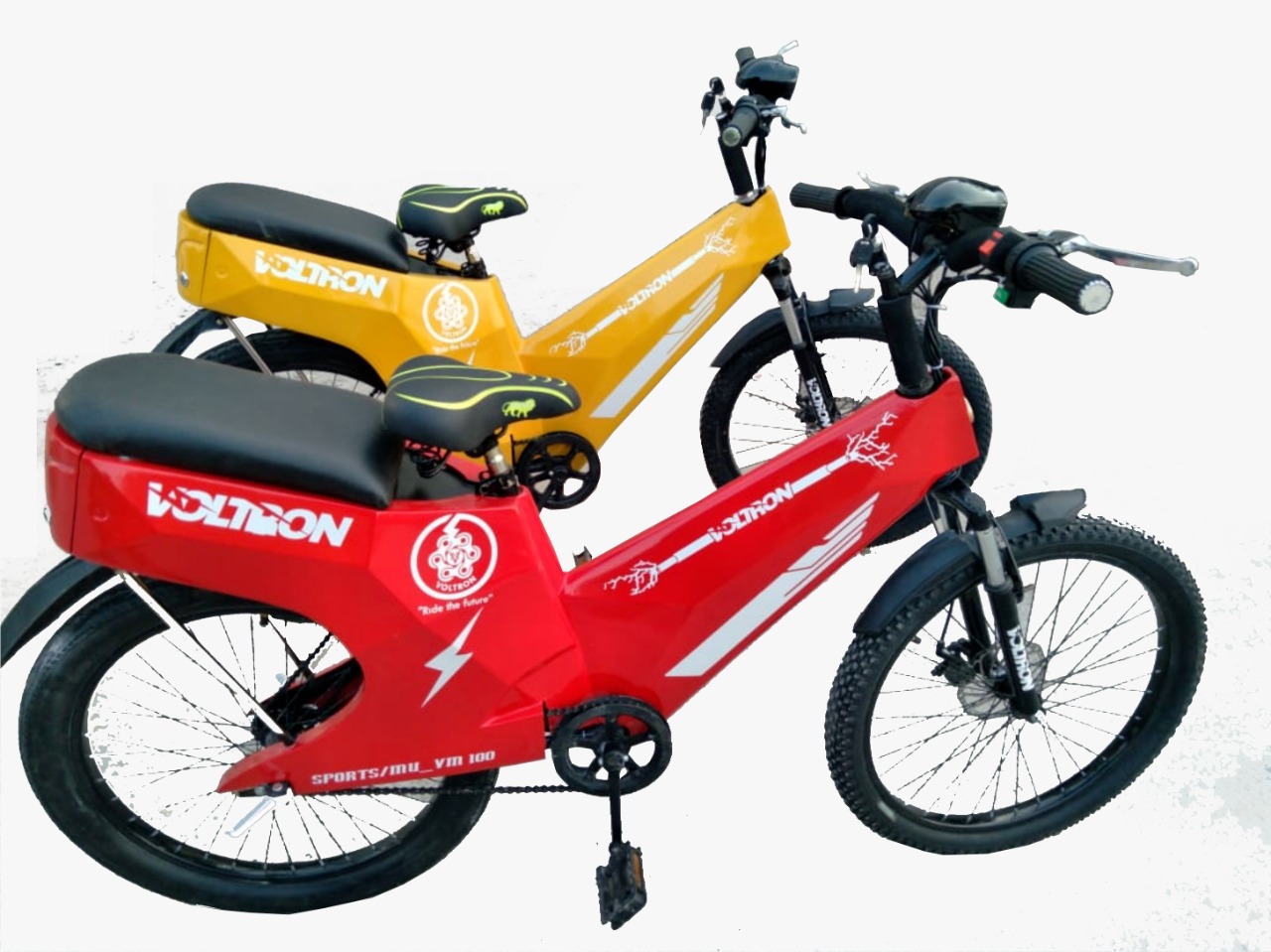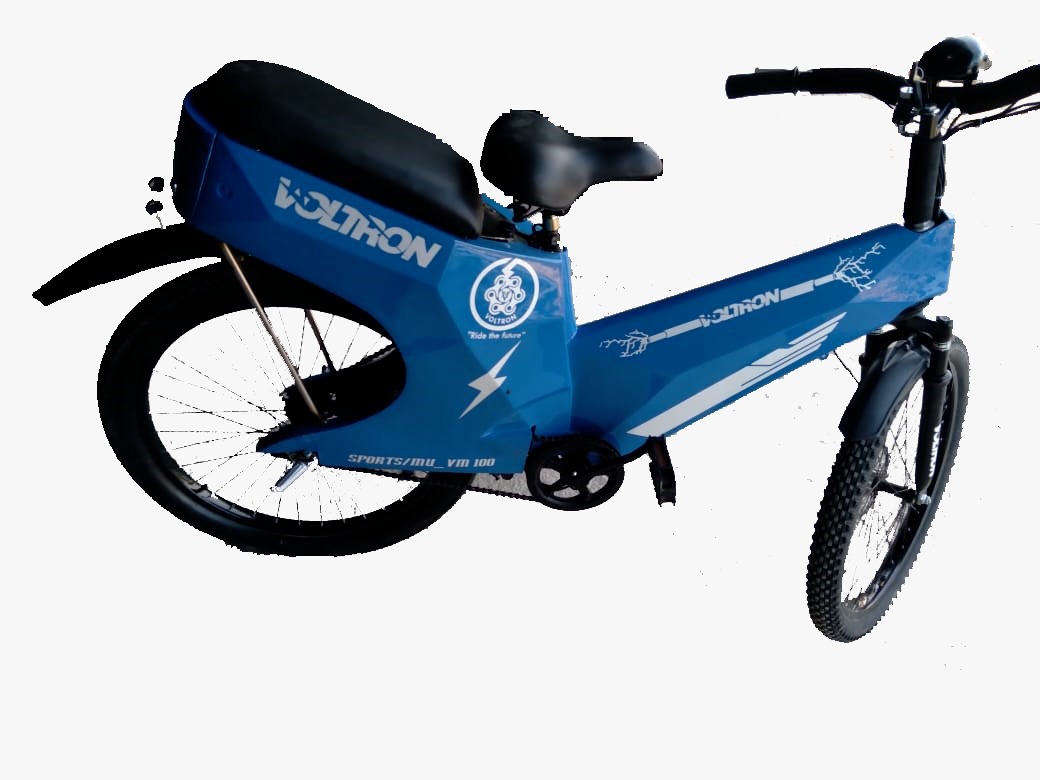Voltro Motors, a Delhi-based EV startup incorporated last year, was on the cusp of launching a prototype version of their electric motorcycle modelled on the Harley Davidson when the nation-wide lockdown was announced on 24 March 2020.
Prashanta, the founder and CEO, had to momentarily shelve his plans because obtaining official approval for manufacturing their electric motorcycles became harder under these circumstances.
But instead of sitting idle, Prashanta and his team decided to develop something that would not require official approvals from bodies like the Automotive Research Association of India (ARAI) and International Centre for Automotive Technology (ICAT).
What emerged a couple of months later was the Voltron E-Cycle with a battery range of 100 km and features that offered off-road riding, pillion riding, and hill riding at just Rs 35,000.
“Before venturing into making an electric cycle, I surveyed the market for it and sought to understand why absorption levels were so low in India despite its eco-friendly and economical nature. One reason was that most e-cycles did not have adequate range. Most e-cycles in the market today have a battery range of 25 to 35 km, which creates range anxiety in the minds of users. Our e-cycles have a range of 100 km on a single charge,” says Prashanta, in an exclusive interview with The Better India.
Another problem with most e-cycles in the market is that none of them have provisions for pillion riding. Most carry a single passenger.
“The idea was to make it suitable for kids to use while going to school or for parents to pick and drop kids to school. To make it ideal for home deliveries of grocery and food items or for use in villages for commuting. We needed to make it suitable for people in sales and field jobs and for commuting to and from the office,” he says.
Climbing flyovers, hills, and off-road
A significant concern with most e-cycles in India is their inability to climb flyovers and hills because they don’t have sufficient power. Climbing atop hills or a flyover with these e-cycles requires commuters to pedal them along with the motor.
“This is strenuous and defeats the purpose of riding an e-cycle. There are two ways in which e-cycles are made based on the placement of motors. In most e-cycles, makers deploy hub motors, which are fitted into the hub [middle] of the wheel. That doesn’t transmit power very efficiently. Instead, we introduced a mid-drive-like motor, which is not attached to the hub of the wheel. This motor is fitted separately on the frame of the cycle and there is a chain that drives the sprocket of the wheel in which case the transmission of power is much higher. We are among the very few e-cycle makers in the world that use such a system,” he says.
But if you look at e-cycles powered by mid-drive motors, they are priced at around Rs 1,90,000. How has Voltro Motors priced their e-cycle this low? “Mid-drive motors per se are very expensive. What we are doing is using a DC (direct current) motor to function like a mid-drive motor, which brings down its cost drastically. Our objective is to make the adoption of e-cycles easier by addressing all their current limitations in the Indian market,” adds Prashanta.
The team at Voltro Motors have tested the e-cycle in the hills of Manipur and even taken rides from Dehradun to Mussoorie and back. “But roads in mountainous places like Ladakh, for example, have a steeper incline. I am not sure about its functionality there, though it’s safe for regular hill riding in places like Nainital, Mussoorie, etc. The e-cycle can take those inclines,” he notes.

Sourcing Components and Other Cool Features
Most makers with a large share in the Indian market manufacture e-cycles which have a battery range of 25 km to 45 km on a single charge, do not offer a pillion riding option, can’t function efficiently on hills or off-road and cost about Rs 34,000 to Rs 55,000. The Voltron E-Cycle comes with better features and at a price that is viable for their customers. Going further, the Delhi-based startup is manufacturing these e-cycles out of their plant in Dwarka Sector-24.
“Components of this e-cycle are sourced from Ludhiana — the cycle spare part manufacturing hub of India. Only the motor is imported from South Korea. We get the battery manufactured to our specification from a company based out of Bhatinda, Punjab. The e-cycle is powered by a 24 volts 30ah Lithium-ion battery, which takes just three hours to fully charge. For commuters, the battery can be charged from any residential electric socket or even with an extension cord attached to a socket,” claims Prashanta.
The obvious advantage of the cycle is that it drastically cuts down on pollution. “It consumes about 700 watts of power to charge up compared to using about 3 litres of petrol to travel 100 km by scooter or motorcycle. Besides, it amounts to a massive saving of close to Rs 236 per 100 kilometres since the cost of travelling 100 km by scooter or motorcycle works out to about Rs 240, as compared to Rs 4 for the Voltron electric cycle,” he adds.
The cycle has also undergone extensive testing on Delhi’s roads and flyovers with trips taken from their plant to Noida, Nehru Place and Manesar riding through all the flyovers.
Interestingly, Prashanta claims that the Indian Army is also currently testing the Voltron e-cycle. As part of their green initiatives, the army is looking to induct these e-cycles that would be used to ferry files from one office to another, among other general tasks.
One feature they have added as per the army’s request is the reverse beep. This e-cycle has a battery usage indicator marked by LED light bars. All of these light bars glow when the battery is fully charged. As a commuter starts cycling, depending on the distance he or she has covered, one bar of light keeps going off. When the last bar of light remains, there is a beep-like sound that starts sounding off, which tells the commuter that the e-cycle will only travel for another 10-15 km. This is the indicator it requires recharging.

“Other interesting features include an auto e-brake cut off. What this feature does is cut off the motor as soon as you apply the brakes. This keeps the rider safe from tilting over, keeps your battery healthy and increases the longevity of disc brake pads. It has an inbuilt hazard light and brake light to ensure the rider’s safety while riding, even at night. Anyone driving behind will know there is a vehicle in front of them. With a maximum speed of 25 km/hr, it does not require a license or registration and is suitable for children. It has been fitted with a tire of 3 inches on the rear to ensure adequate grip is imparted to the cycle,” he says.
For the 52-year-old Prashanta, an economic postgraduate from the Delhi School of Economics, who spent 15 years working in sales for various multinational companies and has three published patents under his name, this has been an interesting journey.
“We have been working in the EV space for more than three years now, attempting to develop our e-motorcycle. But thanks to the e-cycle, we have made some forays into the electric mobility segment in the past six months. At the moment, we are a bootstrapped venture, but we are looking at funding at a slightly later stage. Our vision was to develop a vehicle which was a crossover between an electric cycle and a scooter that can meet the needs of a consumer. Hopefully, we have achieved that goal,” says Prashanta.
(Edited by Yoshita Rao)
No comments:
Post a Comment